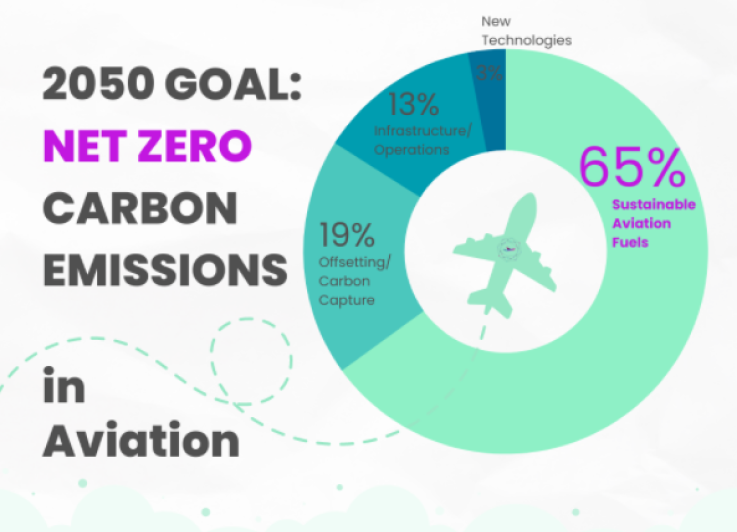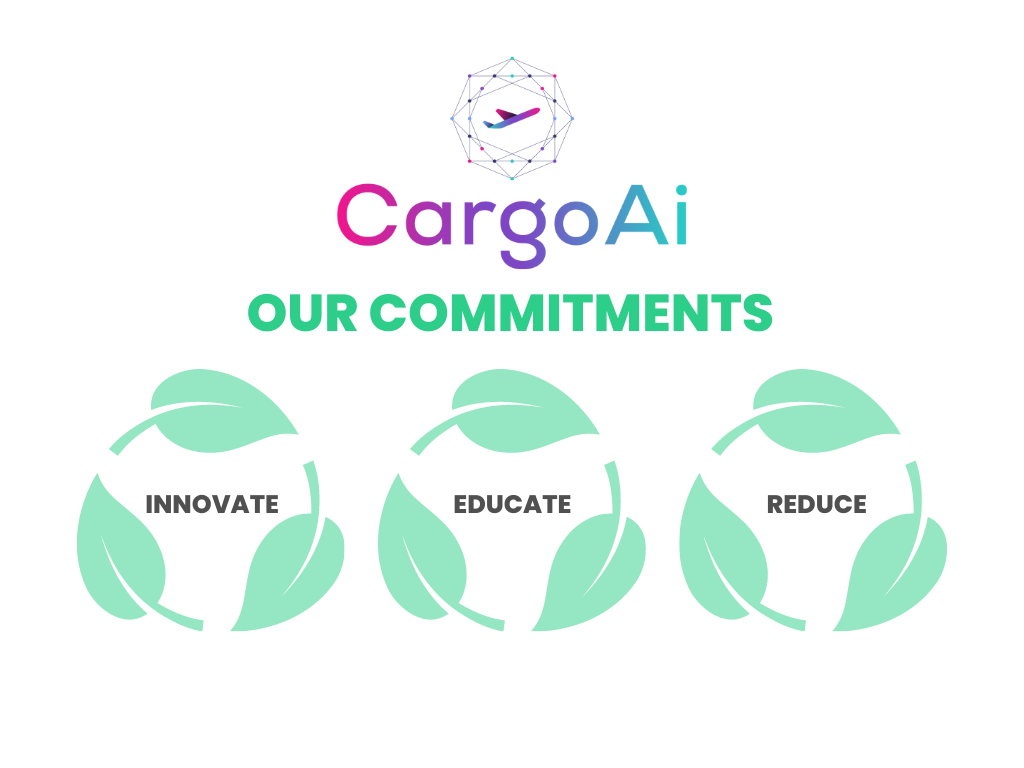AIRFREIGHT’S SUSTAINABILITY JOURNEY

Introduction
With air transport representing around 2-3% of all global greenhouse gas emissions, and a significant percentage coming from air cargo, the airfreight industry has a huge role to play in order to achieve aviation’s carbon reduction emissions goals by 2030 and 2050.
As a result of the turbulent socio-economic global influences on the airfreight industry, there is an urgent call and genuine desire amongst the whole airfreight supply chain, from shippers, airlines, freight forwarders, all the way through to the end customers, to become more sustainable. This involves conscious efforts on each player’s part to first understand their current direct and indirect environmental outputs before being able to implement strategies and set targets to reduce such impacts. Central to this, is for each company to be transparent with the ecosystem, in order for there to be a communal sense of accountability.
Such strategies include measuring Greenhouse Gas (GHG) emissions, including CO2, reducing fuel consumption by reducing weight on board (investing in lighter or reducing packaging, and also using lightweight ULDs), moving to paperless communications, and fleet modernization, to using biofuels and to develop the next generation of novel technologies, including electric or hydrogen powered aircraft. These various strategies all contribute not only to a greener future, but also to cost reductions, making all air cargo operations more efficient.
Towards Net Zero Carbon Emissions in Aviation by 2050
The International Air Transport Association (IATA) has pledged to achieve Net Zero Carbon Emissions by 2050. Aviation’s global ambition is required to limit global warming to 1.5℃, in line with the science-backed Paris Agreement. It means eliminating a cumulative total of 21.2 gigatonnes of carbon between 2021 and 20501.
Aviation is one of the hard-to-abate sectors, so immediate low-emission solutions need to be urgently developed and adopted without further delay. Around 65% of the necessary carbon reductions by 2050 are estimated to come from using sustainable aviation fuel, or 'SAF'.

CargoAi Commitments
As airfreight’s fastest-growing digital enabler and the industry's middleware data aggregator, CargoAi’s vision has always been to bring available technology to the industry, so as to simplify every step of the procurement process for a forwarder. With our unique positioning between airfreight transportation suppliers and buyers, but also thanks to our unique blend of high tech skills and airfreight understanding, we have set ourselves the goal to contribute to a zero carbon future.
INNOVATE : In our marketplace (CargoMART) product, we place much emphasis on building features and syncing with other tech providers to provide a solution that is as cohesive and comprehensive as possible for forwarders. With the launch of our Cargo2ZERO solution, we strive to ensure that green/sustainability features are embedded in every part of the procurement process, so that forwarders are empowered to take immediate climate action. Our objective is Tech for Good: to develop digital solutions to support our clients with their sustainability journey, irrespective of their organisation size and current resources around sustainability.
EDUCATE : Cargo2ZERO provides tools for integrating and accelerating climate action into the airfreight procurement process. These tools include unique detailed CO2 emissions calculations and reporting, steering tools such as dynamic CO2 efficiency scores, as well as SAF purchases through the Neste x CargoAi partnership. We are working with the world’s largest producer of sustainable biofuel, Neste, to promote awareness and ultimately drive adoption of waste-to-fuel solutions within the airfreight industry.
REDUCE : The airfreight industry needs to accelerate decarbonisation by transitioning from compensating for emissions to abating emissions. As a Marketplace and ecosystem, CargoAi is in a very privileged position to identify the gap between the interest for climate action and actual climate action when it comes to airfreight procurement. With our set of solutions, we create indicators and pragmatic tools to reduce CO2 emissions such as greener transportation alternatives as well as an embedded SAF purchase. This way, we ensure that forwarders have enough knowledge, visibility and the right toolbox to actually reduce their climate impact.

Simply put, the CargoAi Mission is to accelerate the industry’s sustainability's initiatives and contribute to the number 1 objective which is decarbonisation and energy efficiency.